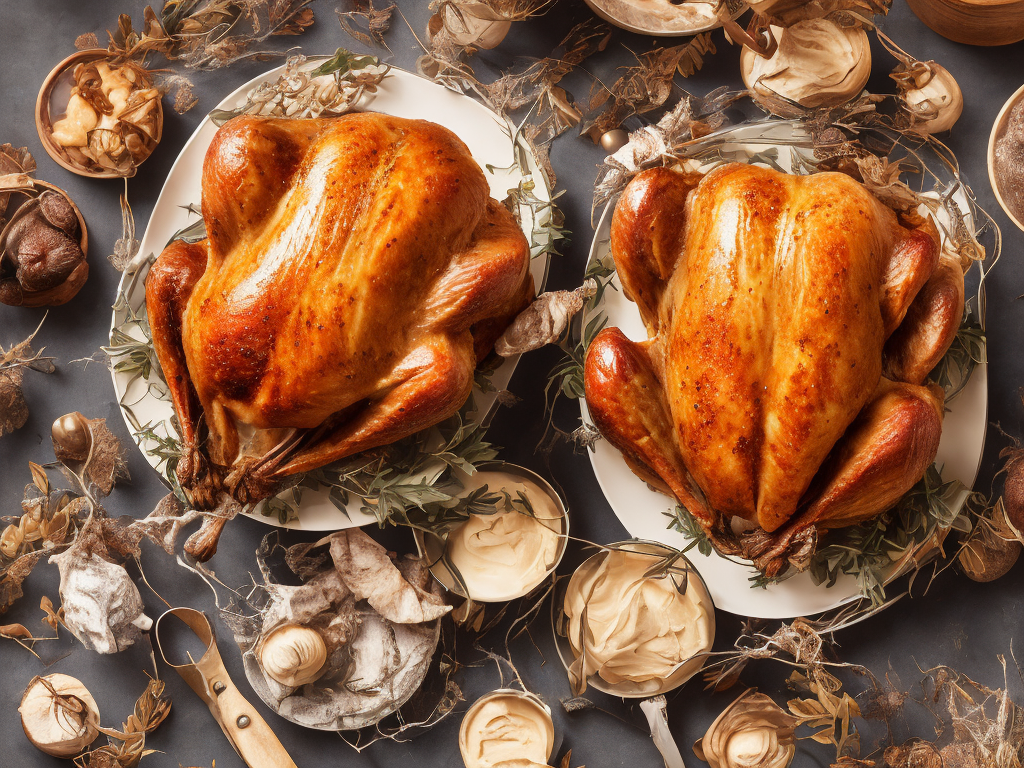
How To Bake A Turkey
Thanksgiving and Christmas are joyous occasions that bring families and friends together to celebrate and create lasting memories. At the heart of these celebrations is undoubtedly the star of the show - the roasted turkey. The aroma of a succulent, perfectly cooked turkey fills the house with warmth and sets the stage for a delicious feast. If you have ever wondered how to achieve culinary perfection with a roasted turkey, fear not! This article will guide you through the step-by-step process of baking a turkey that will have everyone around your table begging for seconds.
First things first, it's essential to select the right turkey. When choosing a turkey, ensure that it is of good quality and appropriate for your gathering size. Estimate about one pound of turkey per person, so if you are hosting a small gathering of six, aim for a turkey around six pounds. Fresh turkeys are ideal, but frozen turkeys are a convenient option that can be stored until needed. If using a frozen turkey, allow ample time for it to thaw in the refrigerator, using the formula of 24 hours per four to five pounds. It’s crucial to never thaw a turkey on the countertop to avoid food safety risks.
Once your turkey is thawed and ready to go, it's time to prepare it for baking. Start by removing the turkey from its packaging and pat dry with paper towels. This will help ensure a crispy, golden skin. At this stage, you may also find the turkey contains a giblet package within the cavity. Check for this and remove it before proceeding. The giblets can be used to make a delicious gravy or set aside for other recipes.
Now it's time for seasoning. Seasoning your turkey is a crucial step in achieving a flavorful bird. Begin by seasoning the inside cavity. A simple combination of salt and pepper will work wonders. Additionally, you can enhance the flavor by adding aromatics such as onion, garlic, and herbs like rosemary, thyme, or sage. Ensure that the cavity is generously seasoned to infuse the turkey with flavor from the inside out.
Next, move on to seasoning the exterior of the turkey. Rub the entire bird with softened butter or oil, which will help promote a crisp, golden skin. Season the turkey with a mixture of salt, pepper, and the herbs of your choice. You can also get creative and add a touch of garlic or onion powder, paprika, or even a pinch of cayenne pepper for an extra kick. Remember that a well-seasoned turkey will make all the difference in the final result.
Now that your turkey is perfectly seasoned, it's time to consider the cooking method. Baking a turkey in the oven is the most common method, resulting in an evenly cooked and beautifully browned bird. Preheat your oven to 325°F (165°C) to ensure even cooking. Place the turkey on a roasting rack set in a roasting pan to elevate it and allow heat to circulate. This will promote a crispier skin and prevent the turkey from becoming soggy with its own juices.
Covering the turkey while baking can help retain moisture and prevent it from drying out. You can use aluminum foil or a roasting pan lid to cover the turkey for the first two-thirds of the cooking time. This will ensure the skin doesn't become overly dark. During the last 30 minutes or so of cooking, remove the foil or lid to allow the skin to turn golden brown. Basting the turkey periodically with the pan juices or a mixture of butter and herbs will also contribute to a moist and flavorful bird.
The cooking time of a turkey depends on its weight. As a general rule, bake the turkey for about 15 minutes per pound. However, it's crucial to remember that this is just an estimate. The most accurate method of determining if your turkey is fully cooked is by using a meat thermometer. Insert the thermometer into the thickest part of the thigh, avoiding the bone. The turkey is safe to eat when the internal temperature reaches 165°F (74°C). This will ensure that the bird is both safe to consume and juicy.
While the turkey is baking, it's essential to keep an eye on it and check its progress periodically. When basting, take the opportunity to check the color and crispiness of the skin. If it starts to become too dark, you may need to cover it with foil or reduce the oven temperature slightly. This will prevent the turkey from over-browning, which can result in a bitter taste or even burning.
Once the turkey has reached its desired internal temperature, it's time to take it out of the oven. Loosely cover it with foil and allow it to rest for at least 20 minutes before carving. Resting the turkey is a crucial step as it allows the juices to redistribute throughout the meat, resulting in a moister bird.
After the resting period, get ready to carve and serve your masterpiece. Begin by removing the drumsticks and wings, and then carefully carve the breast meat. Cut along the natural line, making thin, even slices. Remember to use a sharp carving knife for precise cuts.
And there you have it! Your perfectly baked turkey is ready to be enjoyed by your loved ones. Gather around the table and embrace the delightful flavors of this holiday centerpiece. Remember, practice makes perfect, so don't be discouraged if your first attempt isn't flawless. The art of baking a turkey is a learning experience that can be refined over time. Share the joy of this delicious tradition, celebrate family, and savor the delectable taste of a beautifully baked turkey.
 Self-Instruct
Self-Instruct